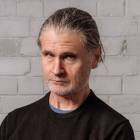Is our “surge” in asylum seekers push or pull? Has the Rudd Government’s bleeding heart softness encouraged refugees to head to our shores? Or are external factors at play?
First, some context. According to the UNHCR, at the end of 2008 there were 15.2m refugees, and one-third were in our own region. The end of the civil war in Sri Lanka and Pakistan’s drive against the Taliban will only have increased the number of refugees in the Asia-Pacific region further this year. Even so, Europe is the biggest destination for asylum seekers: 333,000 claims for asylum were made in Europe 2008, including 35,000 in France and 30,0000 in the United Kingdom. The United States received just under 50,000 claims and Canada 35,000.
South Africa received 207 000 claims from asylum seekers.
In Australia in 2008, 4750 people sought asylum. They formed part of an overall humanitarian program of 13,500 places. This year, there’ll be an increase in the humanitarian program, to 13,750. In the year to March, net migration to Australia was 278,000 people.
Our program accounts for less than a tenth of one percent of the world’s refugees. Our population is 0.3% of that of the world. Our GDP is 1.6% of the world’s. If we accepted as many refugees per person as the conservative Government of Canada, we’d take over 20,000 a year.
Of asylum claims made within Australia by people who have arrived by aircraft, 55% are rejected. The rejection rate of claims made by people who arrive by boat varies between 2-15%.
Of the current “surge” in arrivals, 48% are Afghans, and 36% are Sri Lankan. In short, events in Pakistan and Sri Lanka account for nearly 85% of the current increase.
Why do asylum seekers head to Australia? Well, as the figures above show, they don’t.
Australia attracts disproportionately few asylum seekers, because you can’t get here in a truck, or walk here. But most asylum seekers head to neighbouring countries or countries in their own region, which means that, with about 5m in our own region, including 2-3m Afghans, Australia is on the menu of likely destinations, like it or not.
Evidence from the United Kingdom suggests family connections are also important in refugees’ choice of destination, and refugees from Commonwealth or former Commonwealth countries tend to head toward other Commonwealth countries because of historic ties and, possibly, language.
But the other driver is that they don’t have a lot of choice, and this applies regardless of how tough or loose Australia’s refugee assessment process is. Which countries in our region that have signed the UN Refugee Convention? The only ones are Australia, Cambodia, PNG and New Zealand. None of the ASEAN countries have.
Neither Cambodia nor PNG are in any state to take large numbers of refugees, and you can only get to New Zealand via Australia. Which leaves us. Malaysia is not merely not a signatory to the Refugee Convention, but is known for high levels of corruption, with asylum seekers fruitful sources of bribes and extortion under threat of deportation.
Australia under both sides of politics has been extraordinarily successful at taking a relatively small number of the world’s vast number of refugees. We have minimal control over the factors driving the current increase in boat arrivals, but they constitute a trivial component of our own immigration program, let alone the wider regional problem of refugees.








Excellent work, Bernard. The clearest exposition I’ve ever seen of what the numbers really show.
So if there are 15 million refugees, and UNHCR can handle 14 thousand of them per year, the question is not why are boat people “jumping the queue”, so much as where is this queue, this safe place with a “Queue Here for UNHCR” sign where you can wait your turn?
And if you were in a burning building, and you stood quietly in a queue for the exit door, would you really need rescuing as much as those who take their chances jumping out the window?
“with about 5m in our own region, including 2-3m Afghans”
Afghanistan is in our region? That seems like more than a bit of a stretch. Google Earth tells me it’s over 10,000 kilometres from Kabul to Canberra. Afghanistan is much closer to the UK than it is to Australia.
Not all Afghan refugees reside in Afghanistan.
Correction to my post, I misread (while saying it was clear–not Bernard’s fault).
13,750 is the total to be processed in Australia only. The global total of people assisted by UNHCR at the end of 2008 was 4,598,433. The point still stands.
It will always be possible to show a small percentage of refugees to Australia as compared to other countries or the total of world refugees as it is to show a similar percentage for GDP, population or so many other topics. Is that the point? To my mind the point is that it is abundantly clear that Labour’s changes to the visa process and availability has encouraged refugees and people smugglers to come to our shores. We have a refugee policy and the boat people are queue jumpers. If I was a refugee applying and waiting through the correct channels I would find it hard to justify to my family that we should wait, and not get in a boat. The other issue is Kevin Rudd’s truthfulness on the issue. We all have sympathy for refugees, and there is nothing wrong with the public’s expectation that Australia’s intake will be properly managed with some sense of control. Kevin Rudd is getting a free ride from the press and sooner or later this continual lying will catch up with him. For the rest of us, we can do no more than call a spade a spade when we see one.